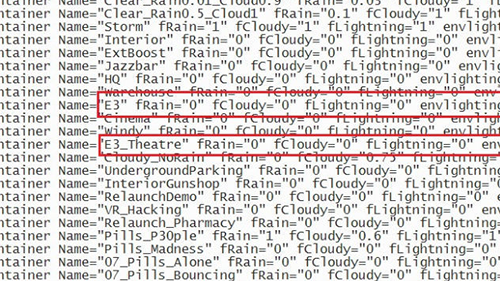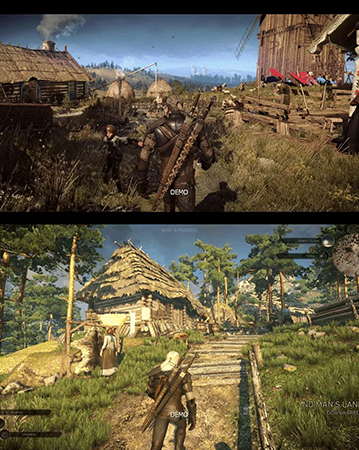By: Max Cannon
Anyone involved in gaming in the past decade has felt the sting of an undelivered promise. It starts with a flashy looking trailer or a snazzy E3 reveal but when the game finally makes it into your possession something seems… off. Maybe your game isn’t running quite as well as was shown, maybe that explosion or puddle doesn’t seem quite as realistic as it did during its first reveal. It’s the dreaded and all too common graphical downgrade.
How Games Can Change In Development
Things change during game development. For example, when The Last of Us was initially shown off at E3 2012 its crafting menu looked like this.
 The Last of Us from E3 2012's stage demo.Courtesy of PlayStation
The Last of Us from E3 2012's stage demo.Courtesy of PlayStation
When the final game released things had changed a bit.
 The final look of The Last of Us.Courtesy of PlayStation
The final look of The Last of Us.Courtesy of PlayStation
There’s definitely a big difference here, nothing too dramatic but things certainly changed. Developers need to often make artistic decisions to change the look and feel of their product and sometimes one thing spills over onto another.
Maybe Naughty Dog wanted to change the font of their game, and by doing that things didn’t quite jive with the layout of their menus, so they changed the menu, but they needed to change how items are picked up in the game, etc.
Things change as a game’s development goes on and putting together a game’s code is much more complex than simply switching around a few things. And we can’t forget that these developers are normally stuck with tight deadlines to meet.
E3 Promises Vs. Final Results
Though some decisions are made in that artistic domino effect, others seem to be a business decision. Ubisoft found themselves the center of a nasty downgrade debacle when Watch_Dogs was missing the graphical fidelity of its E3 reveal trailer. A simple downgrade would be forgivable but the company seemed to intentionally downgrade the game's visuals to allow it to run on consoles, which was made apparent when a modder found leaked files directly referencing files from the E3 demo.
 Watch_Dogs' code directly referencing E3 exclusive files.
Watch_Dogs' code directly referencing E3 exclusive files.
Files specifically referencing animations only shown during the E3 demo were found hidden in the game's code and disabled for the final game unless someone modified the original file. References to the “E3_Theatre,” special weather effects, and depth of field could also be found in the code.
 Even more evidence of E3 exclusive content.
Even more evidence of E3 exclusive content.
It seems apparent that Ubisoft chose to make the game worse to ensure that people had a similar experience regardless if they were playing on console or PC. One could speculate that the company chose to do this to promote gameplay on console’s where sales would be stronger.
The Witcher's Downgrade
With the release of CD Projekt Red’s new game, The Witcher 3, we’ve found ourselves with another graphical downgrade. However, unlike most developers, CD Projekt Red has been very upfront with why they’ve had to alter their game. In an interview with Robert Purchese of Eurogamer, the developers stated “”If the consoles are not involved there is no Witcher 3 as it is… we just cannot afford it.” It’s certainly a bitter pill for PC gamers to swallow, but with the strength of console sales on the market a publisher can’t afford to take a risk on a game that won’t pay off.
CD Projekt Red’s team went on to explain that the graphics changed because their rendering system had to change. “Maybe it was our bad decision to change the rendering system because the rendering system after VGX was changed.”
 The Witcher III looked fantastic but saw its own downgrade.
The Witcher III looked fantastic but saw its own downgrade.
Developers care about the projects they are working on and want to create the best game they can make. When it comes to a change in a game, be it graphics or gameplay, decisions are only made to ensure that the best product possible comes out. Sometimes things change because the funding requires it to, sometimes things change because a publisher is breathing down a developer’s neck, and sometimes it’s strictly to change the direction the project is moving.
That said, it’s good for consumers to be suspicious. When the product you purchase isn’t the same product as advertised there is reason to be concerned. Ubisoft’s consumer presence has struggled since the release of Watch_Dogs and hiding the problem from their customers certainly had its repercussions. Hopefully, CD Projekt Red’s transparency and impressive sales will encourage publishers and developers to be more open with their product development in the future.
Have Your Say!
Has a game ever left you disappointed? Or has a game looked worse than you thought it would? Share your thoughts here!

































